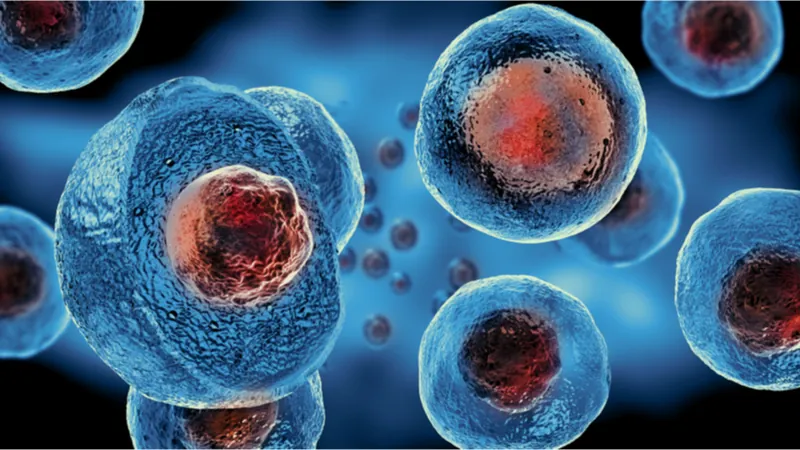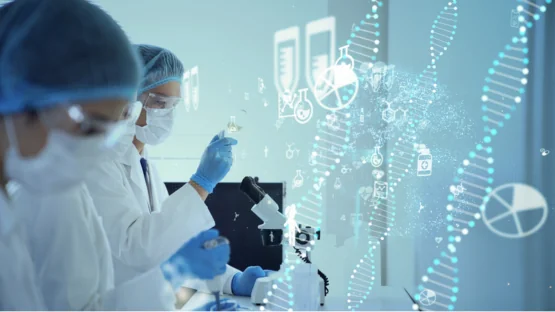In a pre-print paper that has not yet been peer reviewed, a group of researchers presented a new highly efficient method of partial cellular reprogramming [1].
Young from old
Our cells age, and old cells differ from young ones in multiple ways, including gene expression, telomere length, and protein milieu. However, old germline cells can give rise to a shining new organism. The reason is that during the early stages of embryogenesis, germ cells revert to a youthful state [2]. In 2006, a groundbreaking study showed that similar “reprogramming” can be achieved for somatic cells: forced overexpression of just four genes can turn them into rejuvenated cells called iPSCs (induced pluripotent stem cells).

Read More
A milder version of this technique, called partial or transient reprogramming, can rejuvenate cells while preserving their cellular identity. Halfway to pluripotency, the expression of the reprogramming factors is stopped, and the cells revert to their normal, differentiated state. As exciting as it sounds, this approach is tricky, and it fails to achieve the same rejuvenation that full reprogramming does.
All the way to the maturation phase
The authors of this new paper claim to have developed a new partial reprogramming technique that is superior to existing analogs. Reprogramming can be divided into three phases: initiation, maturation, and stabilization, with all previous attempts at partial reprogramming being halted during the initiation phase. The researchers call their technique maturation phase transient reprogramming (MPTR) since they ventured deeper into the reprogramming process before bringing the cells back.
Previous research shows that during reprogramming, which can take some 50 days, cellular rejuvenation becomes substantial at around day 10. Day 17 is just about the final frontier where reprogramming can still be reversed before cells reach pluripotency. This was the window that the scientists focused on.
The expression of Yamanaka factors was made transient by conditioning it on the presence of the drug doxycycline. As soon as the researchers withdrew the drug, the expression stopped. In their experiments, the researchers used cultured human fibroblasts sourced from middle-aged donors, subjecting groups of cells to reprogramming for different periods of time before withdrawal: 10, 13, 15, or 17 days.
Drastic rejuvenation
The first thing the scientists noticed was that in all groups, the reprogramming caused dramatic changes to the fibroblasts’ morphology. After the withdrawal of doxycycline, the cells regained their original shape. When this happens in cell culture, there’s no harm done, but cells changing their morphology in vivo might pose a problem.
On the bright side, the age reversal in the best group was very substantial: 30 years on average, according to the Horvath epigenetic clock, which measures aging-associated DNA methylation. Similar results were achieved with the more advanced 2018 Horvath clock [3]. The researchers estimate that MPTR lowers cellular age about three times more than previous partial reprogramming techniques.
Interestingly, the most substantial age reversal was achieved when the reprogramming stopped at day 13. The researchers hypothesize that a return from more advanced reprogramming stages, such as at day 17, is too stressful for the cell, and this stress eats into the rejuvenation gains.
We need rejuvenated somatic cells so that they can work properly for longer. Therefore, the authors decided to see whether the reprogramming caused restoration of cellular function. One of fibroblasts’ major roles is to produce collagen, a protein indispensable not just for young looks but also for the health of multiple organs, such as our vasculature. Sadly, collagen production declines with age.
The experiments showed that the reprogramming boosted the fibroblasts’ collagen-producing abilities, both in terms of expression of relevant genes and of actual collagen quantity. Several other tests confirmed that after reprogramming, most cells became active and healthy fibroblasts again – just younger.
No telomere rejuvenation
Two results were less encouraging. First, one of the symptoms of cellular aging is the shortening of telomeres with every division. While full reprogramming extends telomeres, no such effect was observed in this case. Further investigation is probably needed to determine just how serious this drawback is.
Second, only 25% of the cells were successfully reprogrammed to the maturation stage. 35% failed to reach it, while for the rest, the results were inconclusive. This might signal a limit for partial reprogramming. On the other hand, even the cells that had failed to reach the maturation stage showed signs of rejuvenation.
Conclusion
Partial reprogramming has been shown to cause cell rejuvenation both in vitro and in vivo, but this technology is still in its infancy, and many hurdles remain before it can be translated into clinical use. Studies such as this one deepen our understanding of how reprogramming works, and the hope is that we will eventually be able to perform it safely and efficiently.
Literature
[1] Gill, D., Parry, A., Santos, F., Hernando-Herraez, I., Stubbs, T. M., Milagre, I., & Reik, W. (2021). Multi-omic rejuvenation of human cells by maturation phase transient reprogramming. bioRxiv.
[2] Kerepesi, C., Zhang, B., Lee, S. G., Trapp, A., & Gladyshev, V. N. (2021). Epigenetic clocks reveal a rejuvenation event during embryogenesis followed by aging. Science Advances, 7(26), eabg6082.
[3] Horvath, S., & Raj, K. (2018). DNA methylation-based biomarkers and the epigenetic clock theory of ageing. Nature Reviews Genetics, 19(6), 371-384.





